In one coastal Scottish village, a dispute rages between those who want to shoot wintering pink-footed geese and those who want to protect them

YOU ARE STANDING AT the edge of a vast river estuary. To your right you can see the small seaside village of Findhorn; to your left you can make out the distant mountains of the Highlands. Directly behind you is a wooden birdwatching pavilion slowly falling into disrepair.
It’s a cold winter morning and a low mist is hovering over the surrounding saltmarsh. The mournful cries of curlews and oystercatchers stand out from the incessant murmur of thousands of pinkfooted geese further out, which appear as a mass of swirling grey. Having spent the night roosting on the mudflats, the birds are taking a while to warm up. Their calls are at first muted and staccato, with the occasional louder ‘wink’ echoing through the melee. As the sun climbs higher, the light creeps across the nearby airfield and gradually the hubbub crescendos into a flurry of feathers and noisy calls.
A ripple moves through the flock, and the birds prepare to move. One or two skeins take to the air and circle once or twice in preparation for their forthcoming flight. When they are sufficiently warmed by the sun, they lift off, line after line, calling to each other as they go, in a breathtaking natural spectacle.
Then, there’s the unmistakeable sound of a gunshot.
Around the bay, along the high-water line, is a series of small camouflage screens. Behind each is a wildfowler with a shotgun. They have been in position since 5am, and as the geese take off, they can finally attempt to claim their prize. A series of shots rings out, but it’s difficult to see if any birds are hit because of the enormity of the flock.
Despite the fracas, two figures walk out onto the sand until they are standing directly between the hunters and their quarry. These are anti-shooting protestors – known simply as ‘antis’ – from the local community of Findhorn Ecovillage. The wildfowlers lower their weapons, as they are duty-bound to do. The hunt is over for today.
The mouth of the River Findhorn, on the Moray Coast in north-east Scotland, is a vast mudflat that offers an invaluable resource to overwintering pink-footed geese, who make the journey here from their breeding grounds in Iceland, Spitsbergen and Greenland. At the beginning of the migration season, in late autumn, numbers can reach more than 60,000 individuals in the bay. Many will continue their passage down to southern Scotland and on into England, but some 10-15,000 remain at Findhorn until heading north again in February.
The geese operate on a diurnal cycle whereby they unanimously lift off at sunrise and fly east towards the light to spend the day feeding, predominantly on barley stubble, in nearby fields. As dusk falls, they fly back toward the sunset to roost on the mudflats, huddling close for warmth and safety. The birds’ comings and goings are spectacular to witness, yet their presence here has been causing tension for some time, between those who want to protect them and those who want to shoot them.
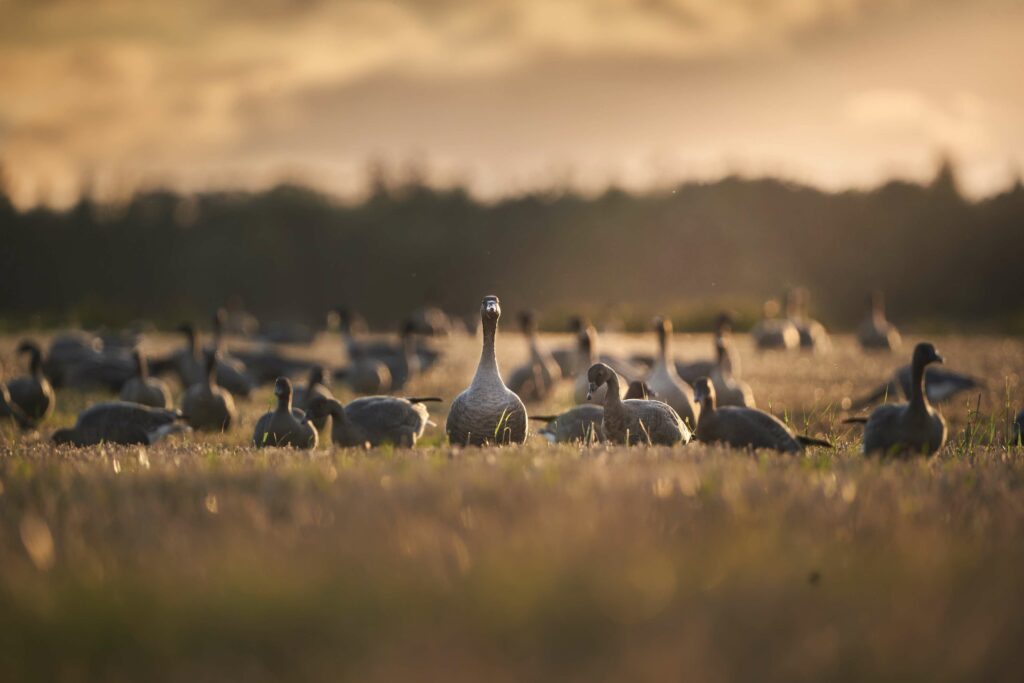
“Wildfowling is a long-standing tradition in the UK and usually takes place on estuaries and coastal marshes”
Every morning during migration season, Sue joins her friend Spencer, a veteran of the RAF, in the bay, as she has done for the past five years. They stand watch at the birdwatching pavilion, ready to march across the sand and place themselves between guns and geese. On this particular day the area is quiet with just a couple of shooters on the far side of the water. The only noise is the geese preparing to take flight.
Sue moved here from Yorkshire six years ago. “I remember hearing the geese first, it must have been October,” she says. “That’s really when they came into my consciousness. The sound of all the guns going off is like being in a warzone, and it’s now become a ritual to get up, make a flask and come down here to protect them. It takes stamina, but I quietly carry on.”
Sue has seen a steady increase in the number of shooters, particularly ‘travelling guns’ – hunters who travel to the area to shoot, not only because they have more luck here, but also because wildfowling regulations are more relaxed in Scotland. These visitors are often said to not obey the local legislation. “I’ve seen visiting shooters sky-blasting [aiming too high] or not having a dog [to retrieve the kill],” she says. “It’s so traumatic to witness this kind of practice, which is [called] ‘sport’.”
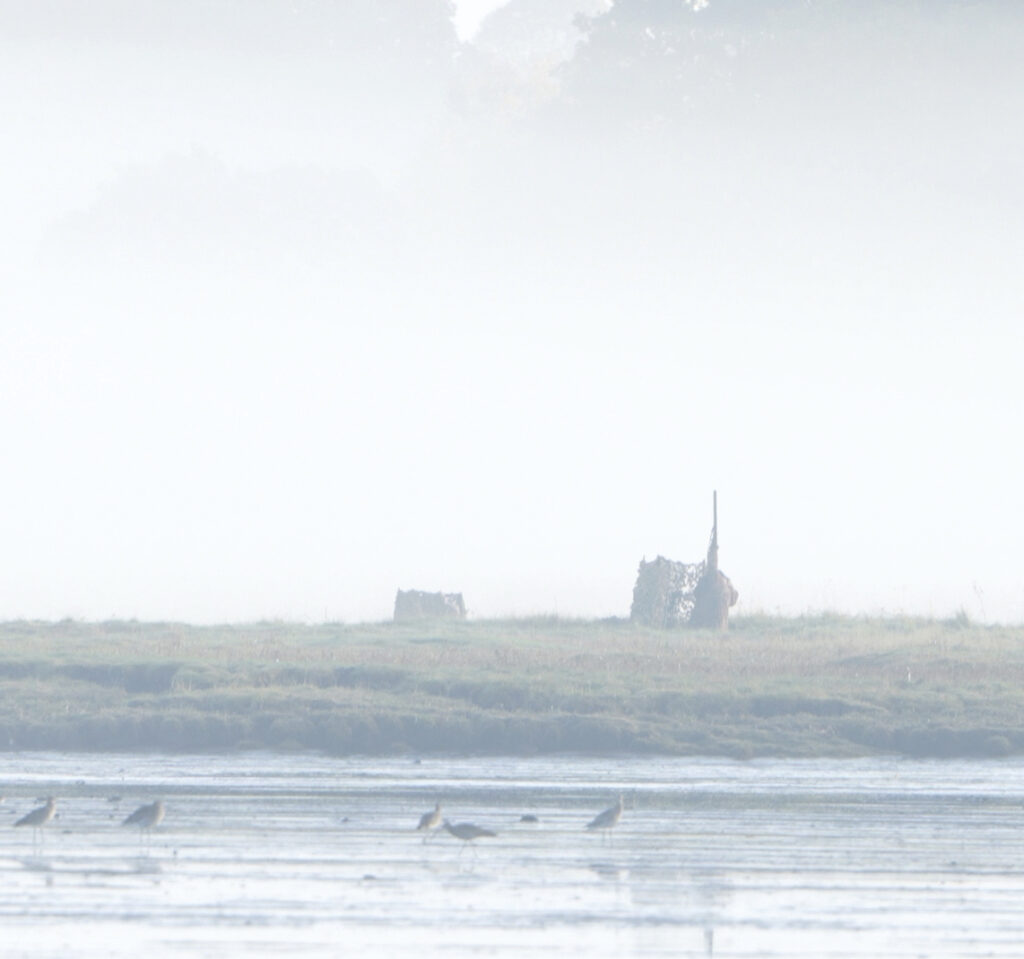
Wildfowling is a long-standing tradition all over the UK and usually takes place on estuaries and coastal marshes. Some species of geese are prolific with relatively stable populations, and according to the Wildlife and Countryside Act 1981, it is legal to shoot them, under permit, in England, Scotland and Wales during the open season (1st September to 31st January above the high-water mark; 1st September until 20th February below the high-water mark, or foreshore). Wildfowling comes with a strict set of laws around firearms and a code of conduct from the British Association for Shooting and Conservation (BASC).
Unlike shooting red deer, shooting geese is rarely about managing numbers. It can be about pest control, but it is largely a field sport in which the fallen – ideally – end up in the cooking pot. In an effort to control the numbers of birds shot, and to avoid wildfowling becoming a commercial activity, the law dictates that birds cannot be bought or sold by individuals. Birds are also protected during the closed season to enable them to move safely between breeding and wintering grounds.
Shooters make the pilgrimage to Findhorn because in Scotland there is a public right to recreation on the foreshore. In other words, the land is freely accessible to any licence-holder during the open season. In England, the foreshore is largely Crown-owned, which means you need permission, usually through wildfowling clubs, to shoot there.
To introduce a degree of control in the face of increasing numbers of shooters at Findhorn, the BASC, in collaboration with conservationist Roy Dennis, put forward the suggestion of a voluntary permit system some years ago, but this was rejected by the wildfowling community.
Martin is a local wildfowler from Elgin, who started shooting as a teenager in 1986. “Nine times out of ten I’m not even interested if I get a bird or not,” he says, “but everything about the experience makes the hairs on the back of your neck stand up.” Martin has become a spokesman for wildfowlers and manages a large proportion of the shooting in the area. He has proposed erecting a low fence to demarcate the legal shooting area, but the idea was rejected on the grounds that it would disturb the sensitive ecosystem.
“Interference from the antis is not a new issue. Even back when I started shooting, we had people coming down – guys in yellow jackets, waving their arms or flags – and it’s intensified over the years,” he says. “A lot of people have moved to the area who don’t like the idea of shooting or wildfowling, and they’ve tried to take the bay as theirs.”
FACTS AND FEATS
Pink-footed geese
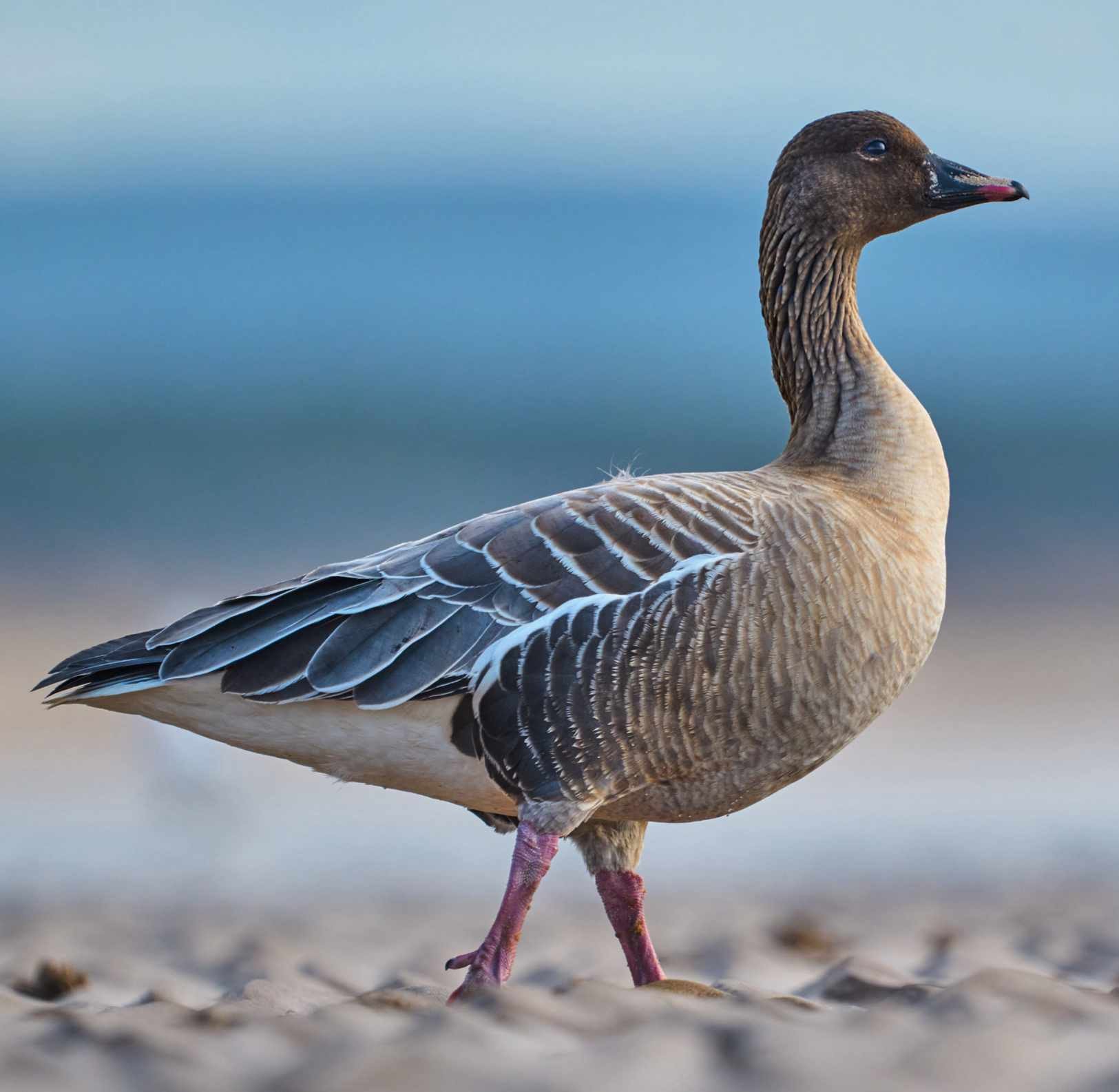
1 The UK hosts 372,000-510,000 pink-footed geese every year – 90 per cent of the global population.
2 The Latin name Anser brachyrhynchus means ‘short-billed goose’ and refers to the bird’s stubby beak.
3 There are two distinct groups of pink-footed geese found globally. Those that breed in Greenland and Iceland (and overwinter in the UK) and those that breed in Svalbard (and overwinter in the Netherlands and Denmark).
4 The calls of pink-footed geese are described as “wink-wink” rather than the classic and familiar “honk” of the greylag and Canada goose.
5 In October 2015, a whopping 85,632 pink-footed geese were counted at Montrose Basin, on Scotland’s east coast.
The arguments continue to fly back and forth. One pro-hunting claim is that it supports the local economy. But Spencer claims that this is not the case. “Those that come here to shoot won’t stay in local B&Bs, they’ll probably stay in caravans or cabins further out in Lossiemouth or Elgin,” he says. “Besides, according to a study by the RSPB, wildlife watching is eight times more profitable than shooting.” This certainly seems possible, though today, there appear to be no wildlife-watchers in the vicinity.
The tension between the two parties runs far deeper than a simple butting of heads. According to Sue, “There’s this kind of masculinity that is ‘the hunter’. They’re camouflaged and behind nets.” Yet, when speaking with wildfowlers, there is also a tenderness and admiration of the animal.
“You do respect your quarry,” says Martin.
“Let’s not forget you’ve taken a life. But with the population of geese that’s here and the number that actually get taken, it doesn’t even touch it.”
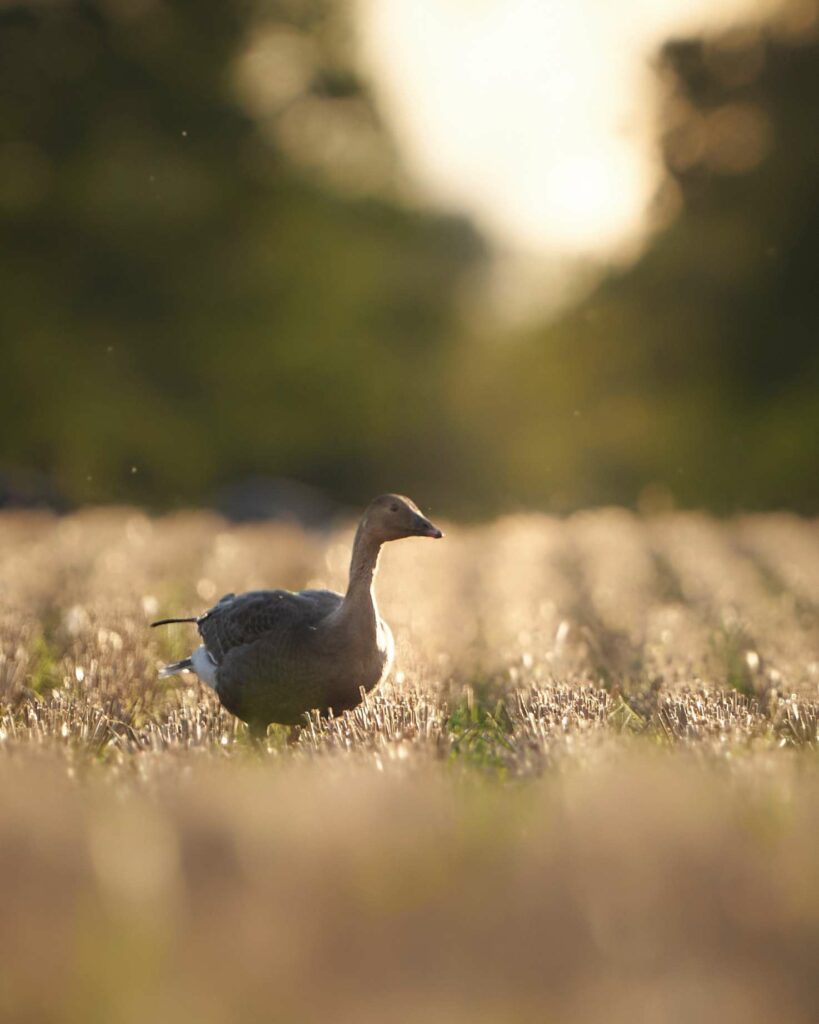
While there have been plenty of verbal altercations, there have been no incidences of wildfowlers refusing to lower their weapons. “Anyone with a gun licence has undergone serious assessment,” says Martin. “They’ve had medical records checked, driver’s licences checked, home visits, everything. If you don’t obey the law, you risk it all.”
For now, then, the antis have a simple solution to stop any hunter from firing a single shot.
In the northern islands such as Orkney and Shetland, culling of geese is encouraged because numbers are climbing, causing problems for farmers. Armed guards have even been deployed in some places to tackle growing numbers of greylag geese, alongside other measures, such as egg-oiling, which involves treating eggs to prevent them from hatching.
Around Findhorn, however, birders have noted a steady decline in the number of birds each year – not as a result of shooting, but because of avian flu. The disease has been particularly prolific in coastal birds, which tend to nest and roost in close proximity. Bass Rock, for example, which houses the world’s largest breeding colony of northern gannets, suffered a 90 per cent decrease in breeding success in 2022.
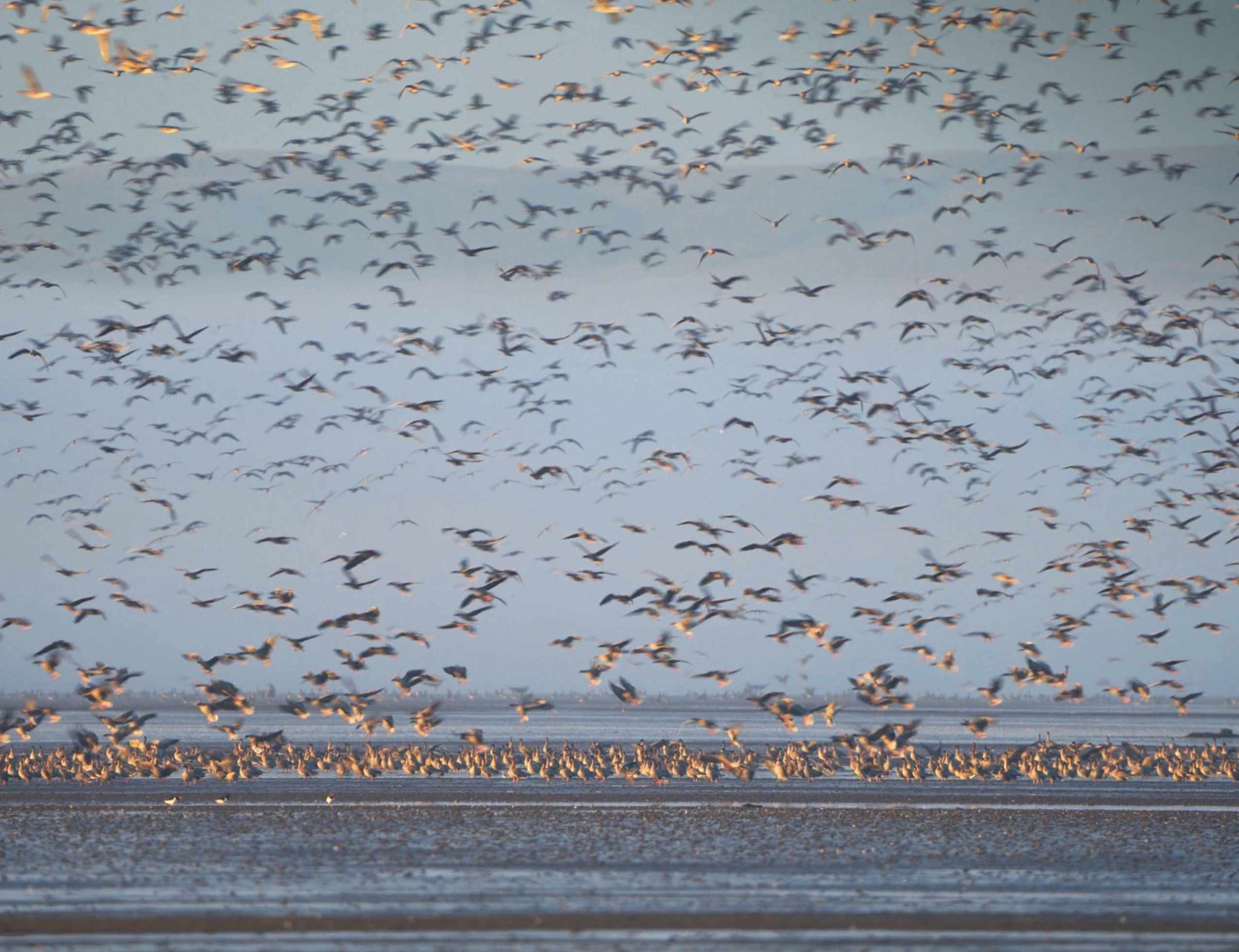
Carcasses of seabirds, geese and game birds have been found across the UK, but Scotland has been particularly badly affected. In 2022, hundreds of dead geese were reported around the shores of Findhorn Bay, resulting in both walkers and wildfowlers being asked to stay away, and 2023 looks to be much the same. The RSPB has yet to comment on the subject of shooting geese, and tries to remain neutral in such matters. However, the release of thousands of game birds in the UK countryside, such as mallards and pheasants (which are captive-bred and released for sport shooting) does present a very real vector for the spread of avian flu. As a result, the RSPB has called for a moratorium on all game bird releases while the issue persists.
The future of Findhorn’s geese remains uncertain, with population dynamics ever changing due to external pressures from climate change, avian flu and wildfowling. For locals, no resolution appears forthcoming and deep resentment and mistrust remain on both sides. “I’m 99 per cent sure I won’t get shot,” says Sue, “but I’m willing to be arrested. If I am, it will bring more people to the cause.” Spencer has suggested a resolution of half a week shooting, half a week no shooting, but a group of hunters from Yorkshire, who wished to remain anonymous, remarked that “Even if there’s one shooter, with one shotgun and one cartridge coming out once a week, the antis won’t be happy”.
And so plays out the stalemate at Findhorn, which seems likely to continue for as long as the pink-footed geese play out their natural cycle of migration to this remote, wild shore.
Voices of Findhorn
Will encountered a range of arguments for and against shooting pink-footed geese.
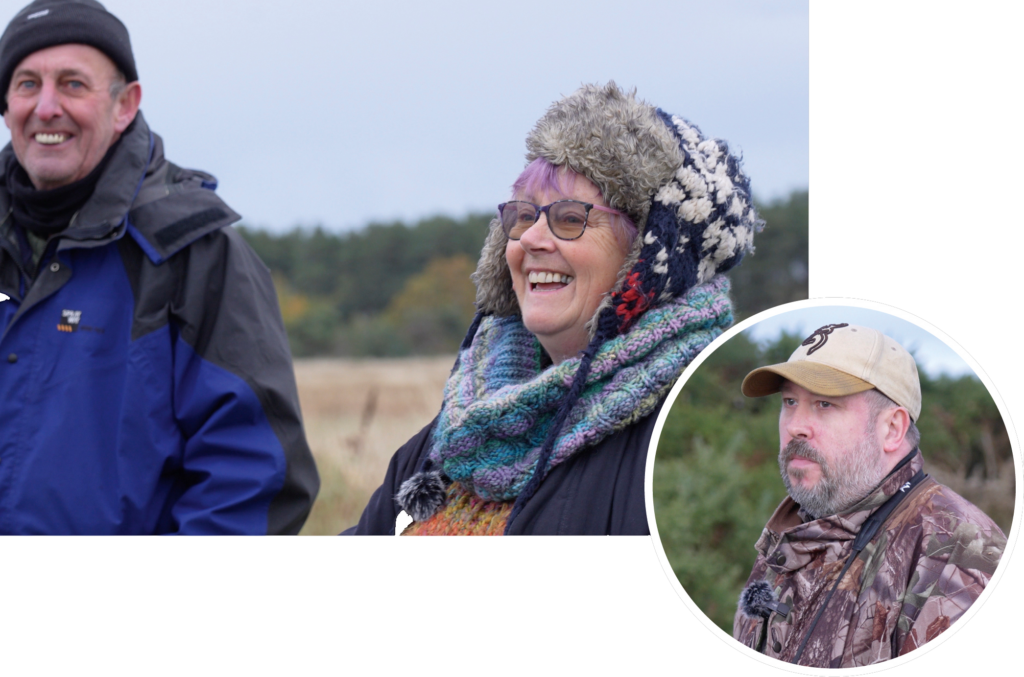
‘ANTIS’ SAY:
● Shooting is purely for cruel sport and kills are often not retrieved for cooking
● Visiting wildfowlers don’t respect legislation
● Wildlife watching would be more profitable for the local economy
WILDFOWLERS SAY:
● Large goose population remains unaffected
● There is a strict set of shooting laws and a code of conduct set by the BASC
● Wildfowling supports the local economy

ABOUT THE AUTHOR
Will Hall is a wildlife presenter and bushcraft instructor from north-east Scotland. He studied animal biology and conservation before pursuing a career in the outdoors. See more of his work at willhallwildlife.co.uk.
WHAT’S LEGAL?
Which geese can be shot?
● In the UK, it’s legal to shoot Canada, pink-footed and greylag geese.
● It’s illegal to shoot bean, barnacle and Greenland white-fronted geese, and all varieties of Brent geese.
● European white-fronted geese can only be shot in England and Wales.
